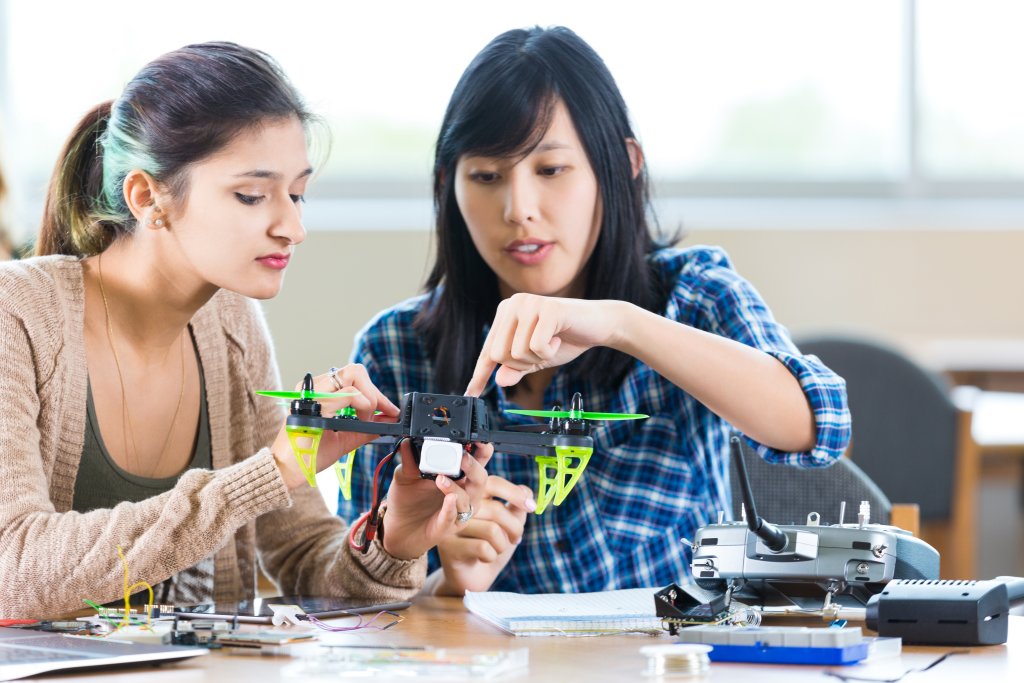Are you born creative, or can you teach yourself how to create new ideas?
As someone who has several new ideas before breakfast, I often get asked how I come up with new ideas and what people, particularly parents, can do to teach themselves and their children to be more creative. So here are my top 5 tips…

1. Empty your mind!
Being able to mentally focus is important so the first action is to empty your mind. This is best achieved by putting aside distractions like mobile phones, tablets, computers, games consoles, TV and books. If your mind is being entertained, then it’s unlikely to want to work hard in creating, and yes, creativity is hard work.
Once you have set aside distractions, find a quiet place to sit with a blank piece of paper and a pencil and practice a few slow breaths. Inhale and exhale slowly, let your eyes wonder over the scene from a window, let yourself calm down. If it helps, focus on the piece paper, the size of the paper, the whiteness of the paper, the four corners of the paper, the feel of the paper. Let your mind wander…
Of course, it is not possible to empty your mind completely, but, stop yourself thinking about actions like what you need to do next, what you need to buy or how much there is still left to do. Try to simply give yourself 5 or 10 minutes to be idle, breathing slowly, letting your mind think about this and that.
This takes some practice. Children often say they’re bored, and incidentally boredom is a great way to come up with new ideas to occupy yourself. Adults often think they are wasting time, but, focus is critical to creativity so learning to empty your mind to a good preparatory technique.

2. Learn to articulate
You need to find words to describe what you want to create, whether this is a product, a service or idea for a movie, you are going to have to explain it so write down words. Just single words, not sentences. If you want to solve a problem, it also helps to write down in words what the problem actually is – as many words as you like, as long as you keep it to a single piece of paper.
I particularly like mind mapping as a technique. A mind map is a graphical way to represent ideas and concepts. Put simply, it is writing down an idea inside a bubble shape and then expanding on this idea with bubble shapes that you join onto your original bubble or associated bubble depending on the relevancy.
This is a description of mind mapping from Litemind:
Drawing a mind map is as simple as 1-2-3:
- Start in the middle of a blank page, writing or drawing the idea you intend to develop. I would suggest that you use the page in landscape orientation.
- Develop the related subtopics around this central topic, connecting each of them to the center with a line.
- Repeat the same process for the subtopics, generating lower-level subtopics as you see fit, connecting each of those to the corresponding subtopic.
For further information on Litemind, visit https://litemind.com/what-is-mind-mapping/
Restrict yourself to a single side of A4 paper per idea. If you have lots of different ideas, write them down on separate sheets of paper, but, expand on only one idea at the item. Remember, you need focus to be creative.
Once you have written down as much as you can, you can think about the next phase, building a prototype or model. If it’s an intangible idea like a service, you will still need a virtual model on how you are going to develop it, sell it, what resources you will need etc.
If you are not ready to develop the idea, set aside the mind map and come back to it periodically, augmenting until you are ready to move forward.

3. Build models
I find visualising a creative idea with a prototype or model is great step forward in realising your idea. Use whatever comes to hand: play dough, lego, cardboard, wood, paper, glue, scissors, drawing pencils etc.
Start by drawing the idea. My own attempts at drawing are lamentable, but even match stick depictions are good way to get an idea of the size, proportions, weight and shapes you might want to consider.
Once you are happy with the image, trying making a prototype of it. Blue Peter skills with cardboard and empty washing up bottles might seem bizarre, but such models can make your dream idea come alive.
If you are hoping to create a commercial product or service, this is a good time to start writing up your idea in simple terms as you will need to prepare a pitch for funding and support. The five questions you will need to answer are the who, what, why, when and where, i.e.
– Who will use this product – adults, children, businesses? (Consumer or Business)
– What is it? What does your product or service do? What is it called? (Product & Brand)
– Why should they buy it? Is cheaper? Does it save money, energy, time etc? (USP)
– When will someone need this product or service? (Purchase Point)
– Where will they be able to get your product or service? Online only? In the shops? Via the post?
In business terms, your ‘elevator pitch’ (the proposition of your idea in less than 3 minutes) needs to meet the 4Ps of the marketing mix, i.e. Product, Price, Place & Promotion. Some suggest that there are 7Ps in the marketing mix as you need to also think about People (those who might sell as well buy your product or service), Process (the mechanism by which your product or service will be delivered) and Physical Environment (the environment in which your product or service will be consumed), although the extra three Ps are often more relevant to tech industries, where the product is intangible, or the services sector.
The reason for the modelling stage is to allow you to consider all the elements for delivering a finished product or service.
Once you’ve built your model and thought through the development process, you might be ready for the next step…..

4. Improve existing products
Only by building a model can you visualise the final product and this is where you might hit a snag. Someone else has already thought of it.
Don’t give up. Examine the competitive products, see if you can improve on it. Sir James Dyson devised the bagless vacuum cleaner even though vacuum cleaners had been around for decades earlier. Sir James had the idea of using cyclonic separation to create a vacuum cleaner that would not lose suction as it picked up dirt and it revolutionised the industry.
If you’ve been frustrated with Tips 1 -3 so far, then Tip 4 might be what you need. Think about improving or building on existing products and services.
Think about what frustrates you; from packaging that doesn’t open to something that you need which doesn’t yet exist. Simple ideas like scissors for left-handed people or a computer that can talk by tracking your eye movements have all come about because of someone’s frustration with existing products.
The Hindi word ‘Jugaad‘ describes an improvised or makeshift solution using scarce resources. It’s a way of life in India, where washing machines are used for whipping up yogurt drinks, but it’s also an innovation theory. In a business context, jugaad is a “frugal, flexible, and inclusive approach to problem solving and innovation.” So says Professor Jaideep Prabhu, author of a book on the subject ‘Jugaad Innovation: Think Frugal, Be Flexible, Generate Breakthrough Growth’.
But don’t get bogged down in process theory, just fix the problem in your own ‘jugaad’ way and see if you can re-purpose an existing product for new applications.
5. Brainstorming is fun
At this point, you might be thinking that creativity is essentially a lonely activity. Yet it doesn’t have to be. It is true that few friends or work colleagues would be willing to work through Tips 1 – 4 above with you, unless they were going to be a co-founder of your multi-million pound business!
However, working collaboratively reaps rewards for many businesses so you can try it yourself with a simple brainstorming exercise. Get 3 to 4 friends or colleagues in the same room together; remove all distractions; set a time limit on this imprisonment (say 1 hour); define the parameters of what you hope to achieve and the reward that they will achieve at the end. The aim is to throw in as many ideas into the session (without criticising any), and then talking through some of the more popular ones. You will need to listen but also participate as brainstorming is not really a spectator sport.
Once you have whittled down the ideas to 1 or 2 popular ones, you can think though Tip 2 (articulating) & 3 (modelling) to bring the best one to fruition.
Iteration and patience
Even after you’ve developed your creative idea into a working model and have plans to scale-up, you may find someone has beaten you to it, or the idea simply “does not fly”; you cannot get funding and support for it, it does not sell well or does not make any money. The final piece of advice is not to give up. Success often comes after many cycles of the process I’ve described above; iteration, repeating the steps, is key to developing the most successful creative ideas. It took James Dyson 15 years to develop his bagless vacuum cleaner and he said “in the digital age of ‘overnight’ success stories such as Facebook, the hard slog is easily overlooked.” So be patient and good luck!
About the author
Lopa Patel is a digital entrepreneur with significant experience of creating start-ups and transforming businesses through technology. The founder of two ventures in online media and a data-driven marketing consultancy, she is an evangelist for STEM, innovation and bridging the skills gap in business, as well as promoting entrepreneurship among young people. An inspirational leader, Lopa has been recognised with many accolades including an MBE for services to the creative industries in 2009 and the Queen’s Award for Enterprise Promotion 2015.

